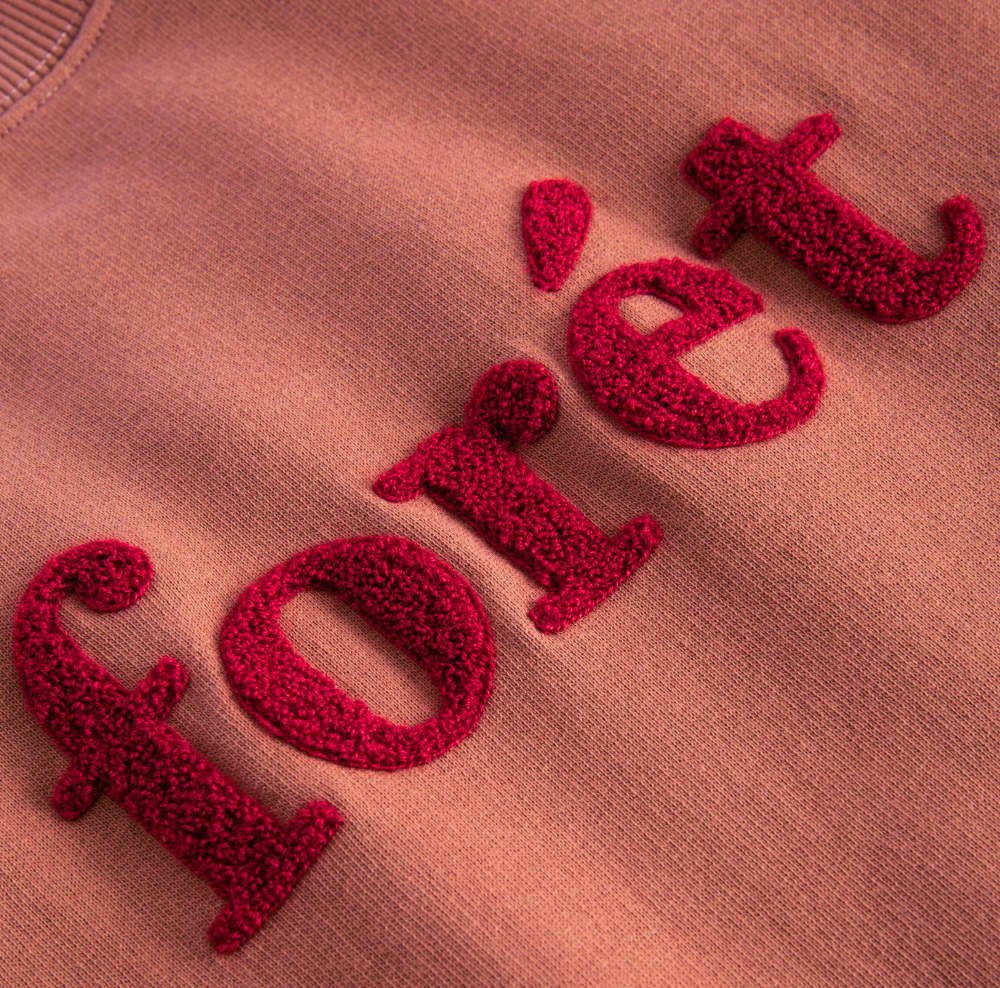Conclusion
Flock printing is a versatile and unique method that adds a luxurious, textured finish to a variety of fabrics. Whether you’re looking to create custom apparel, home textiles, or promotional items, this technique offers endless possibilities for adding depth and dimension to your designs.
By understanding the process of flock print and staying up-to-date with the latest trends and developments, you can make informed decisions about how to best incorporate this technique into your products. With its combination of durability, versatility, and aesthetic appeal, flock printing remains a valuable tool in the world of textile design.
Flock Printing: How Does It Work?
Flock printing is a unique and versatile method in the textile industry, known for creating designs with a soft, velvety texture. This technique has been around for decades and continues to be popular for adding a luxurious feel to various fabrics. But how does it work, and why should you consider using it? In this article, we’ll explore the ins and outs of flock printing, from its origins and modern developments to the step-by-step process of how it’s done.

Flock Screen Printing: What Is It, Exactly?
Flock screen printing is a specialized technique that involves applying tiny fibers, known as flock, to a surface coated with adhesive. The result is a raised, textured design that feels soft to the touch and adds a tactile dimension to the print. These fibers are usually made from materials like nylon, rayon, or polyester and are cut to a specific length before being applied to the adhesive.
The process of flock printing is typically done through a screen printing process, where the adhesive is first applied to the fabric through a stencil or screen. Once the adhesive is in place, the flock fibers are applied using an electrostatic charge, which ensures they stand upright and adhere evenly to the adhesive. This creates a durable, high-quality print that not only looks great but also feels luxurious.
One of the main appeals of flock screen printing is its versatility. It can be used on a wide range of fabrics, including cotton, polyester, and blends, making it suitable for various applications such as apparel, home textiles, and promotional items. The raised, velvety texture of a flock print gives products a premium feel, making them stand out from standard screen-printed items.
Fashions and Developments in Flock Printing
Over the years, flock printing has evolved, with new techniques and trends emerging to keep the method relevant and in demand. Originally used primarily for home textiles and automotive interiors, flock print has found a significant place in the fashion industry, where it’s used to create unique and eye-catching designs on clothing and accessories.
Current Trends in Flock Printing:
- Mixed Media Designs: Modern fashion often incorporates flock screen printing alongside other printing techniques, such as screen printing, embroidery, and digital printing. This blend of textures creates visually interesting and complex designs that appeal to consumers looking for something different.
- Sustainability: As with many other printing methods, there is a growing focus on sustainability within the flock screen printing industry. Manufacturers are increasingly using eco-friendly adhesives and flock fibers made from recycled materials, making flock printing a more sustainable choice.
- Customization: The rise of customization in fashion has also impacted flock print. Brands are using this technique to offer personalized products, allowing consumers to create one-of-a-kind items that reflect their style. The unique texture of flock printing makes these customized items particularly appealing.
Developments in Flock Printing Technology:
- Digital Flock Printing: While traditional flock screen printing remains popular, advancements in digital printing technology have led to the development of digital flock printing. This method allows for more precise and detailed designs, as well as quicker production times. Digital flock printing is especially useful for complex patterns that would be difficult to achieve with traditional methods.
- Improved Adhesives: Another significant development in flock printing is the improvement of adhesives. Modern adhesives are more durable, flexible, and environmentally friendly, ensuring that flock prints maintain their quality even after repeated washing and wear.
- Electrostatic Flock Application: The use of electrostatic flocking has also become more sophisticated. New machines can apply the flock fibers more evenly and efficiently, resulting in a smoother, more consistent finish.
These developments in flock printing have expanded its applications and made it an even more attractive option for designers and manufacturers looking to create high-quality, textured prints.

How Does Flock Printing Work?
Understanding the process of flock printing is key to appreciating the unique qualities of this technique. Here’s a step-by-step guide to how flock printing works:
1. Preparation of the Design:
The first step in flock printing is to prepare the design that will be printed on the fabric. This is typically done using a stencil or screen, which will be used to apply the adhesive in the desired pattern. The design can be simple or complex, depending on the desired final product.
2. Application of Adhesive:
Once the design is ready, the next step is to apply the adhesive to the fabric. This is usually done through screen printing, where the adhesive is pushed through the stencil or screen onto the fabric in the desired pattern. The type of adhesive used can vary depending on the fabric and the intended use of the final product. The adhesive must be strong enough to hold the flock fibers in place, but also flexible enough to ensure the fabric remains comfortable to wear.
3. Flocking:
After the adhesive is applied, the flock fibers are added. This is typically done using an electrostatic flocking machine, which charges the fibers and causes them to stand upright as they are applied to the adhesive. The electrostatic charge ensures that the fibers are evenly distributed and adhere properly to the adhesive, creating a smooth, consistent flock print.
4. Curing:
Once the flock fibers are in place, the next step is to cure the print. This involves heating the fabric to a specific temperature to ensure the adhesive fully bonds with the fibers and the fabric. Curing not only secures the fibers but also enhances the durability of the print, ensuring it withstands washing and wear.
5. Finishing:
After curing, the fabric may go through additional finishing processes, such as brushing or steaming, to enhance the softness and appearance of the flock print. These finishing touches can make a significant difference in the final quality of the product, giving it a more polished and professional look.
6. Quality Control:
The final step in flock printing is quality control. Each print is inspected to ensure that the flock fibers are evenly applied, the design is accurate, and the overall finish meets the required standards. Any defects, such as uneven flocking or poor adhesion, are addressed before the product is packaged and shipped.
FAQ
What fabrics are best suited for flock printing?
Flock printing works well on a variety of fabrics, including cotton, polyester, and blends. However, the choice of fabric can affect the final result. For example, smoother fabrics tend to hold the flock fibers better, resulting in a cleaner, more defined print. On the other hand, fabrics with a rougher texture may require a stronger adhesive to ensure the flock fibers adhere properly.
How durable is a flock print?
When done correctly, flock printing is highly durable. The combination of strong adhesive and proper curing ensures that the flock fibers remain securely attached to the fabric, even after repeated washing and wear. However, it’s important to follow care instructions, such as washing the garment inside out and avoiding harsh detergents, to prolong the life of the print.
Can flock printing be combined with other printing techniques?
Yes, flock printing can be combined with other techniques, such as screen printing and embroidery, to create unique, multi-textured designs. For example, a flock print can be used for certain elements of a design, while other parts are screen printed with traditional inks or enhanced with embroidery.
Is flock printing environmentally friendly?
The environmental impact of flock printing depends on the materials and processes used. Many manufacturers are moving towards more sustainable practices by using eco-friendly adhesives and recycled flock fibers. Additionally, the durability of flock prints means they tend to last longer, reducing the need for frequent replacements.
How does flock printing compare to other textured printing techniques?
Flock printing is often compared to other textured printing methods, such as puff printing or high-density printing. While each technique offers its own unique qualities, flock printing is particularly valued for its soft, velvety texture, which gives garments a luxurious feel. Unlike puff printing, which creates a raised, spongy effect, flock printing offers a more refined and sophisticated finish.








